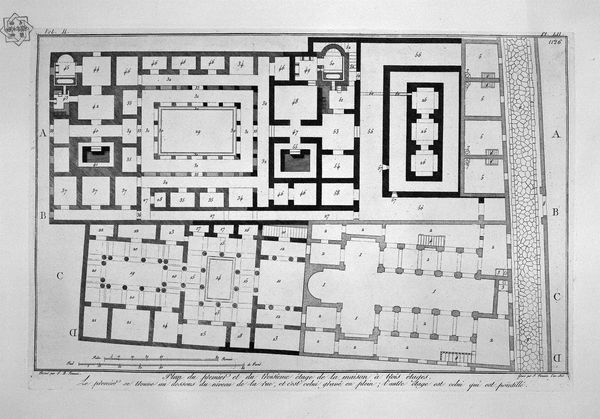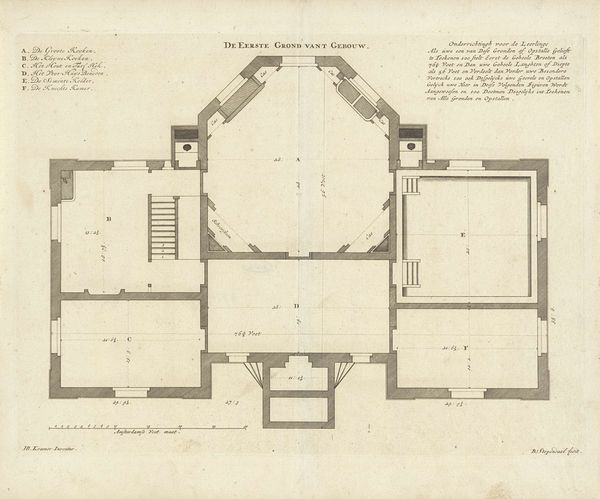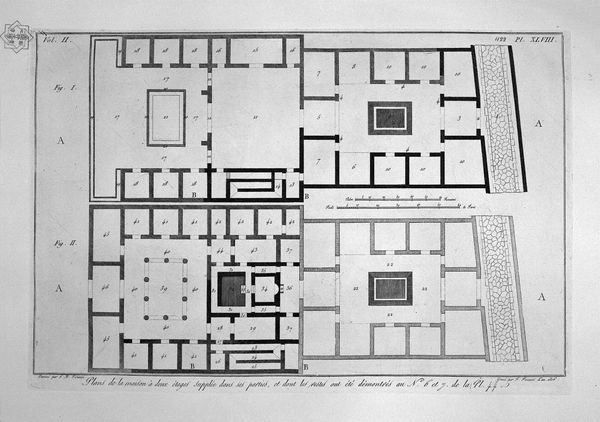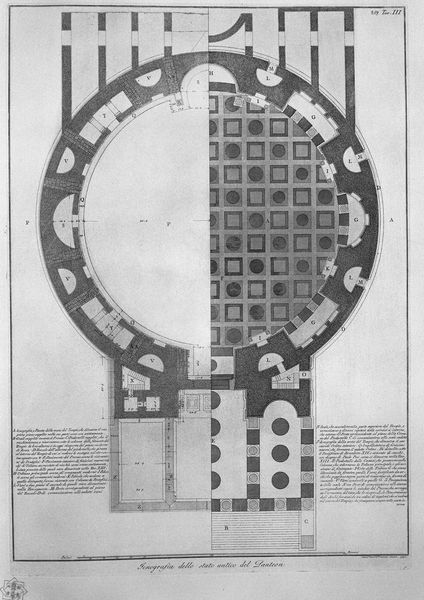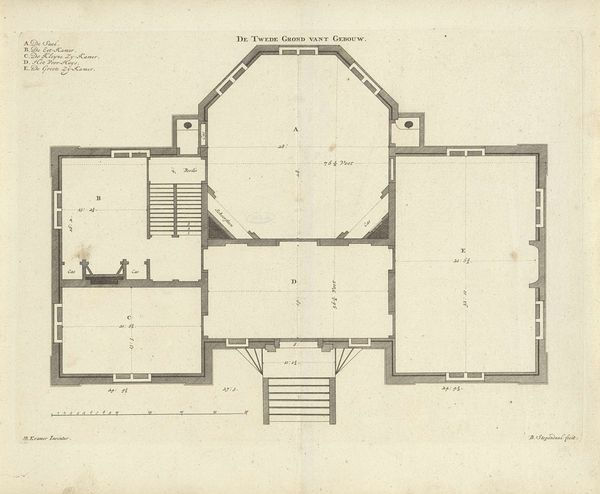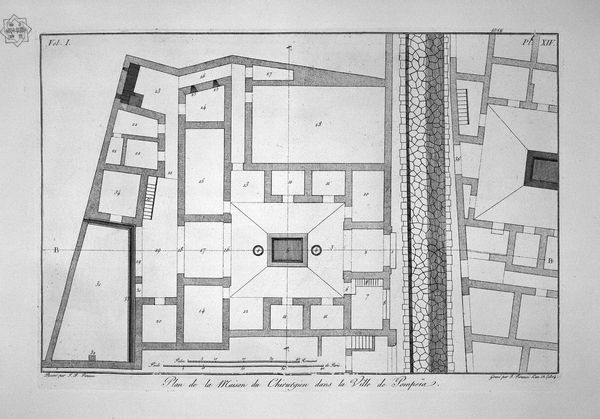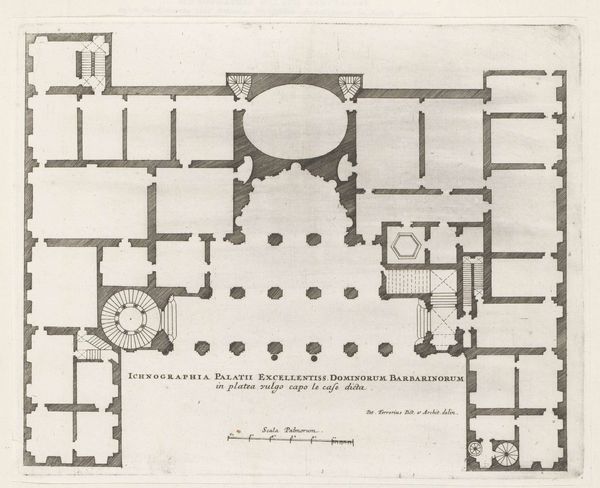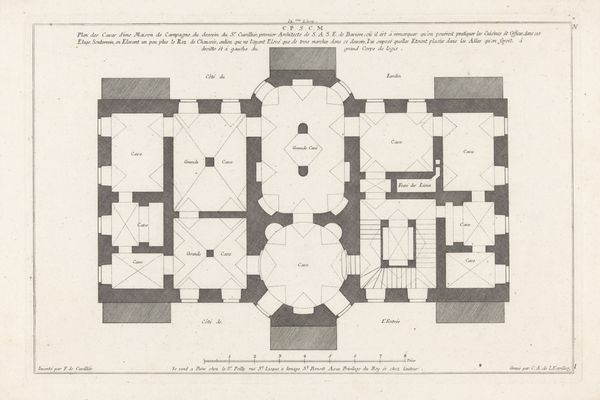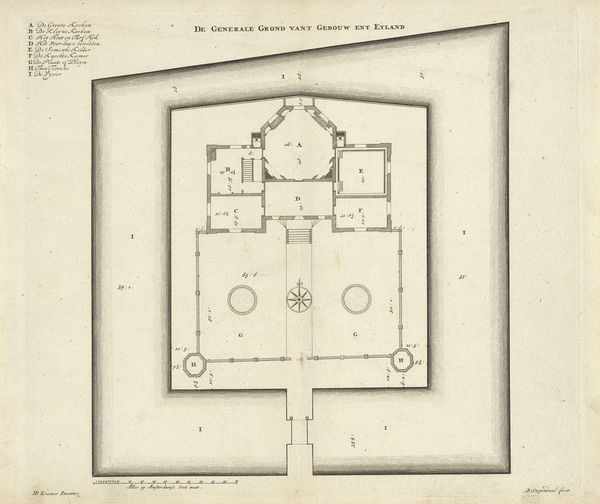
The Roman antiquities, t. 3, Plate XXI. Plan of the burial chambers of `freedmen and servants of the family of Augustus, situated on the Appian Way a mile from the Port of St. Sebastiano.
0:00
0:00
drawing, print, engraving, architecture
#
architectural sketch
#
drawing
# print
#
romanesque
#
history-painting
#
engraving
#
architecture
Copyright: Public domain
Giovanni Battista Piranesi etched this plan of the burial chambers for the freedmen and servants of Augustus on the Appian Way. The symmetrical layout, bisected by orthogonal lines, speaks of Roman order and their architectural principles. However, it is in the circular and semi-circular forms that we find deeper echoes. These rounded shapes, reminiscent of the oculus in Pantheon, have symbolized cosmic unity since antiquity. We see it echoed in Renaissance paintings and the mandalas of Eastern traditions. The circle represents the cyclical nature of existence, a symbol of eternity. Even the act of mapping, of reducing a space to a symbolic representation, is a potent gesture. It mirrors our own psychological need to order the world, to make sense of the chaos of existence. These chambers, designed to house the dead, become a stage for a drama that touches us all. The motifs are a cultural reservoir.
Comments
No comments
Be the first to comment and join the conversation on the ultimate creative platform.

